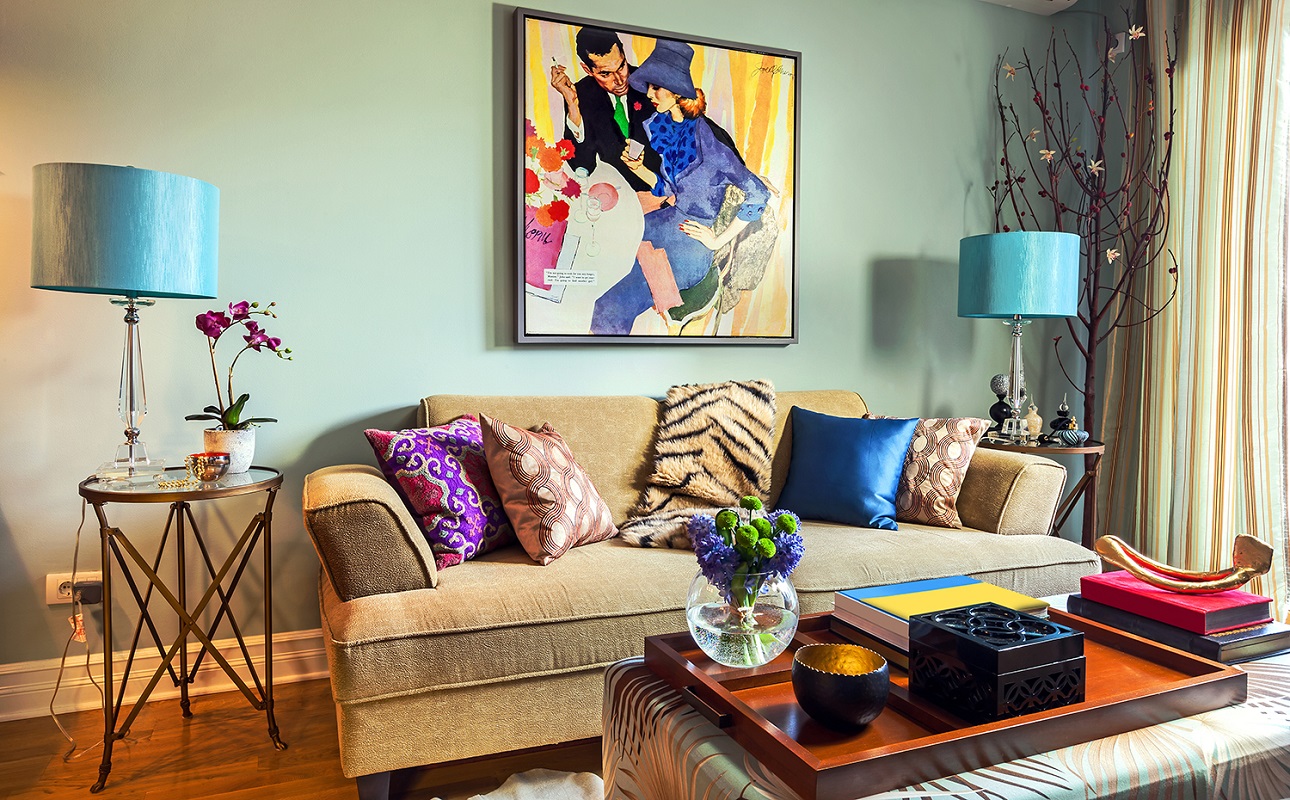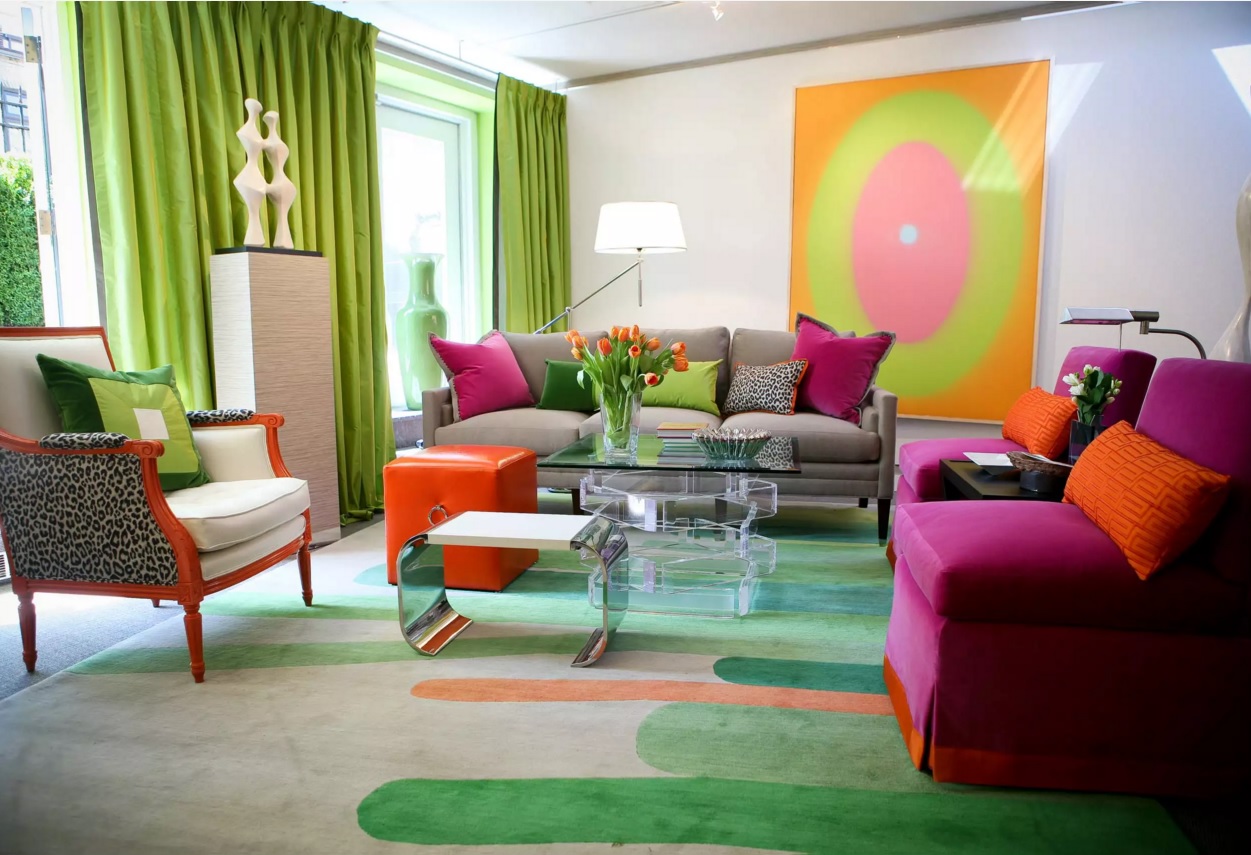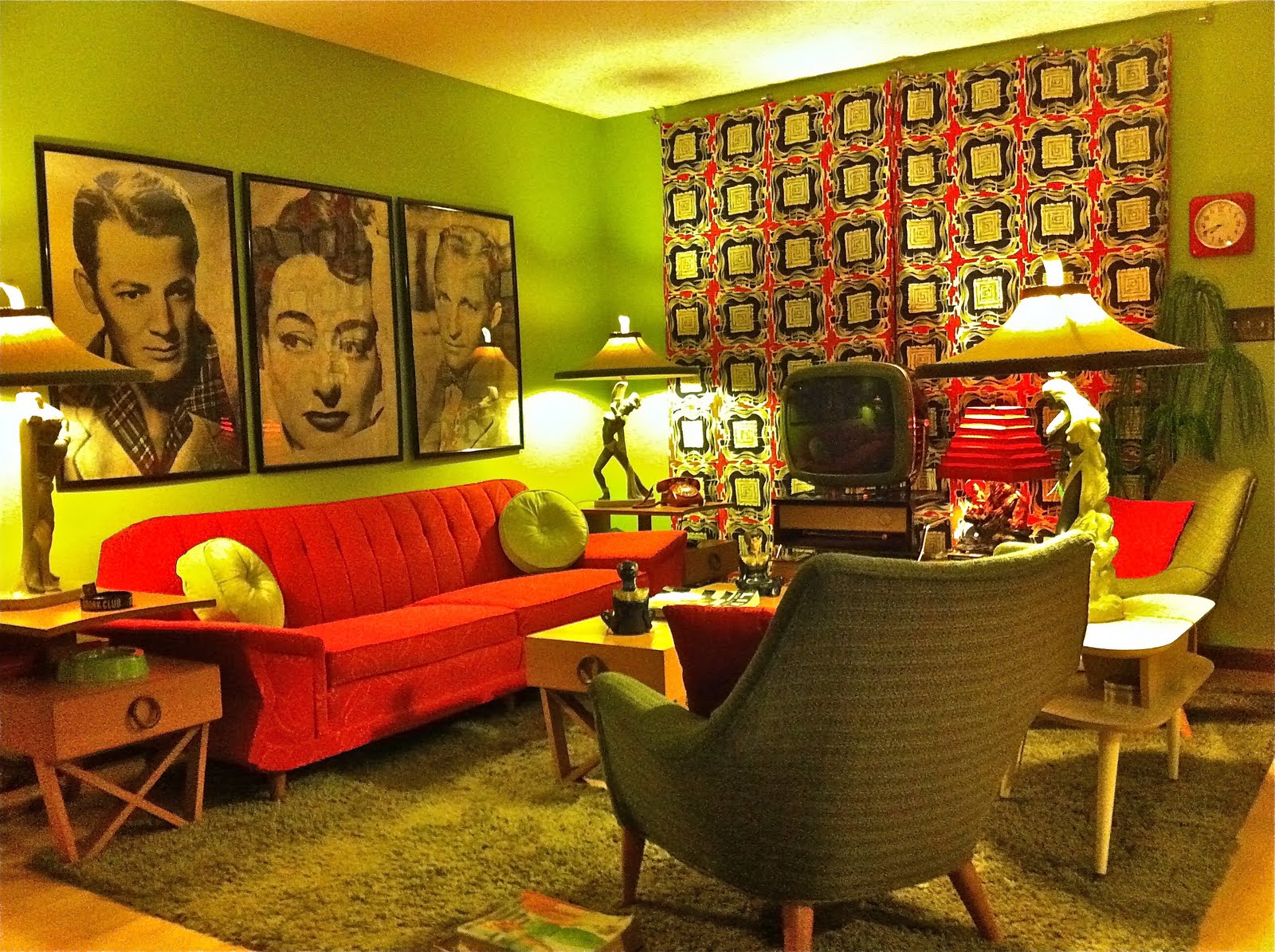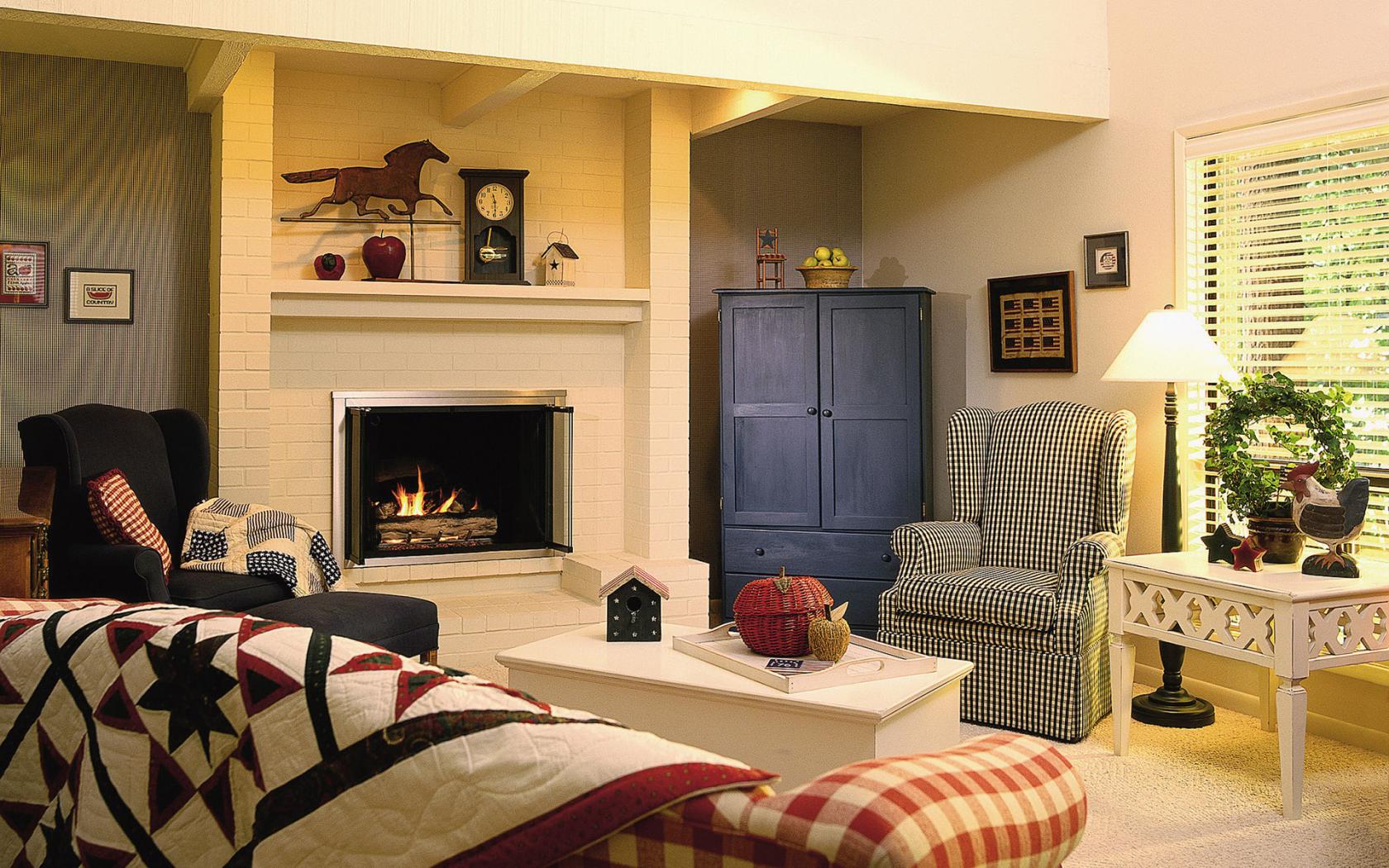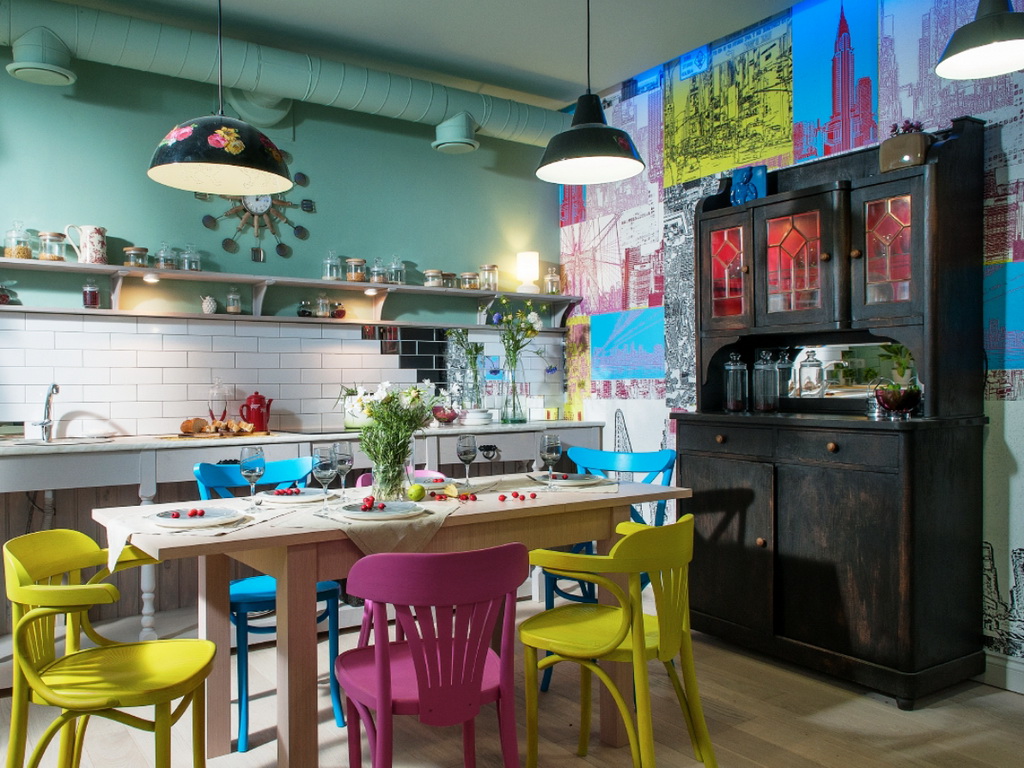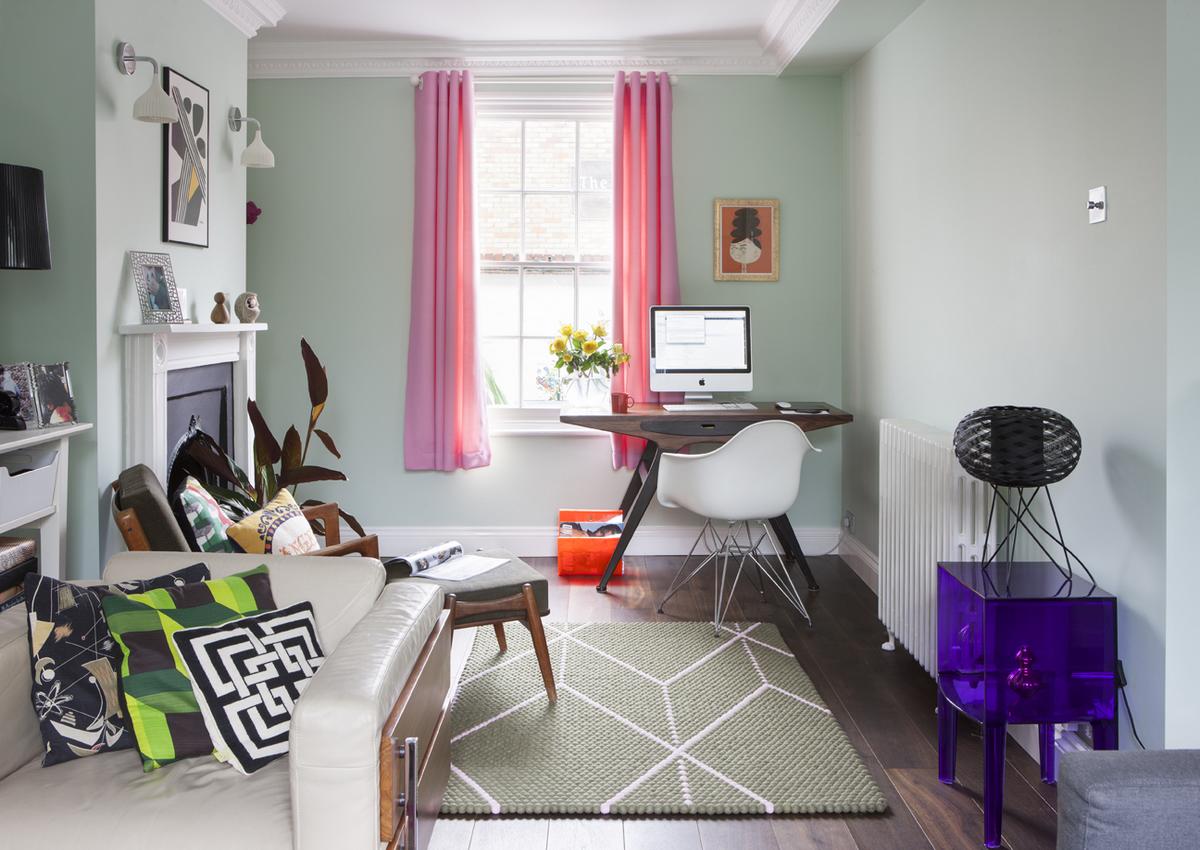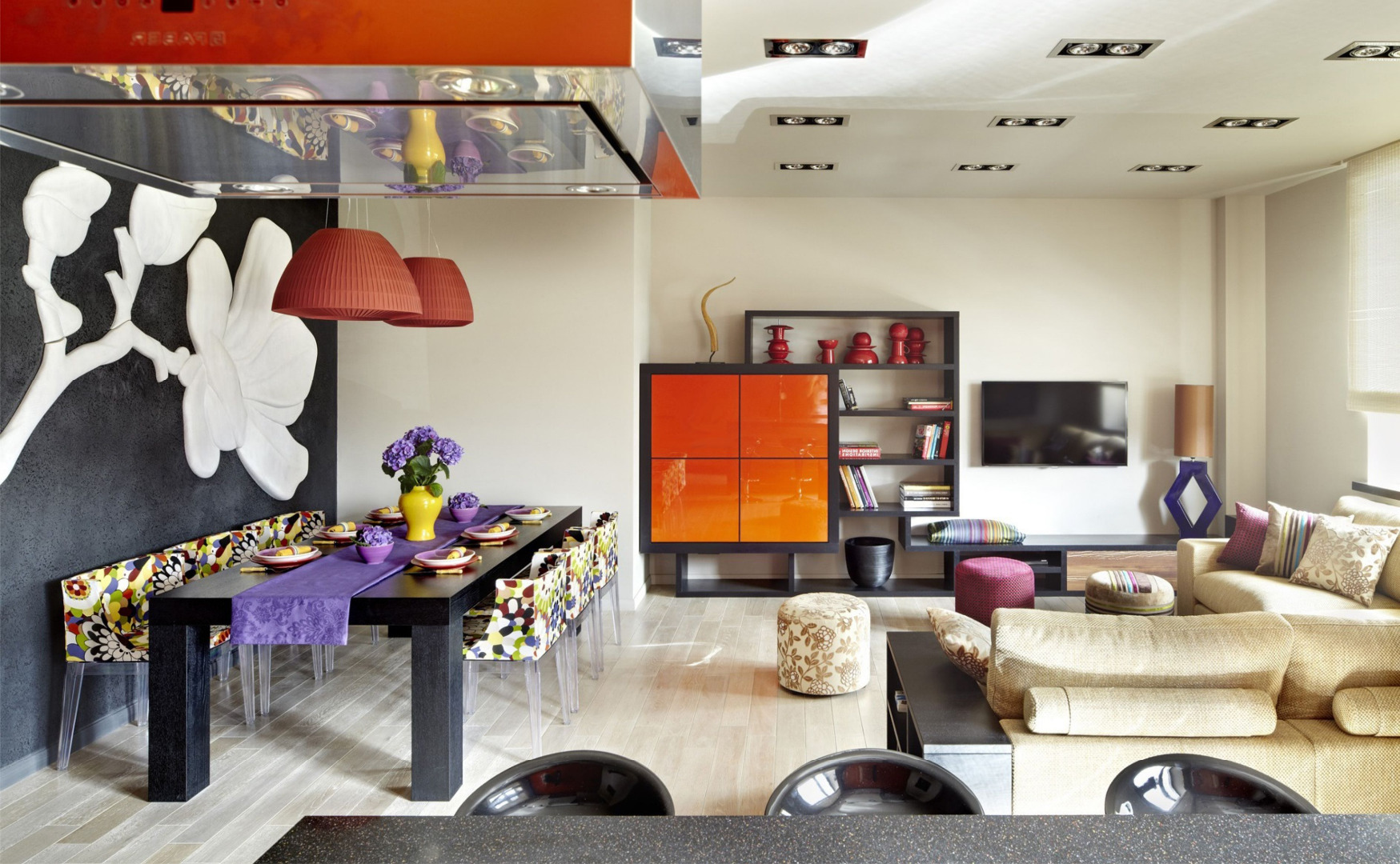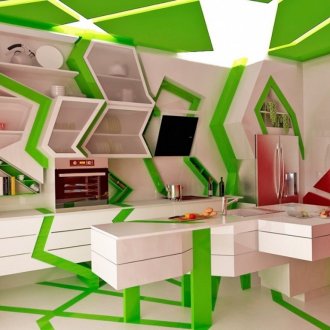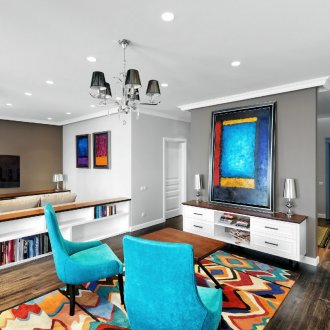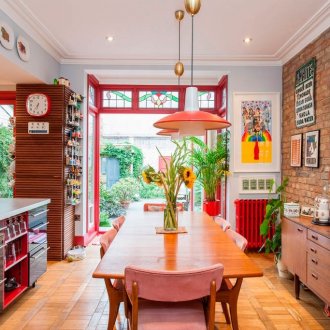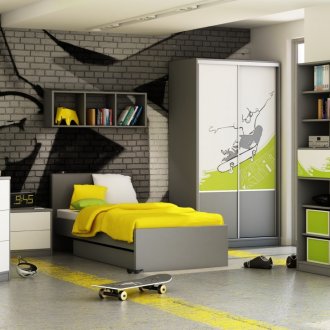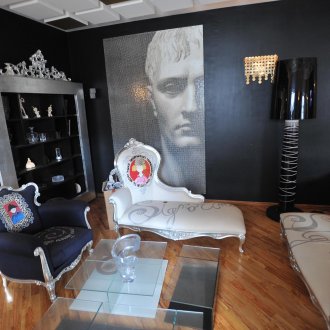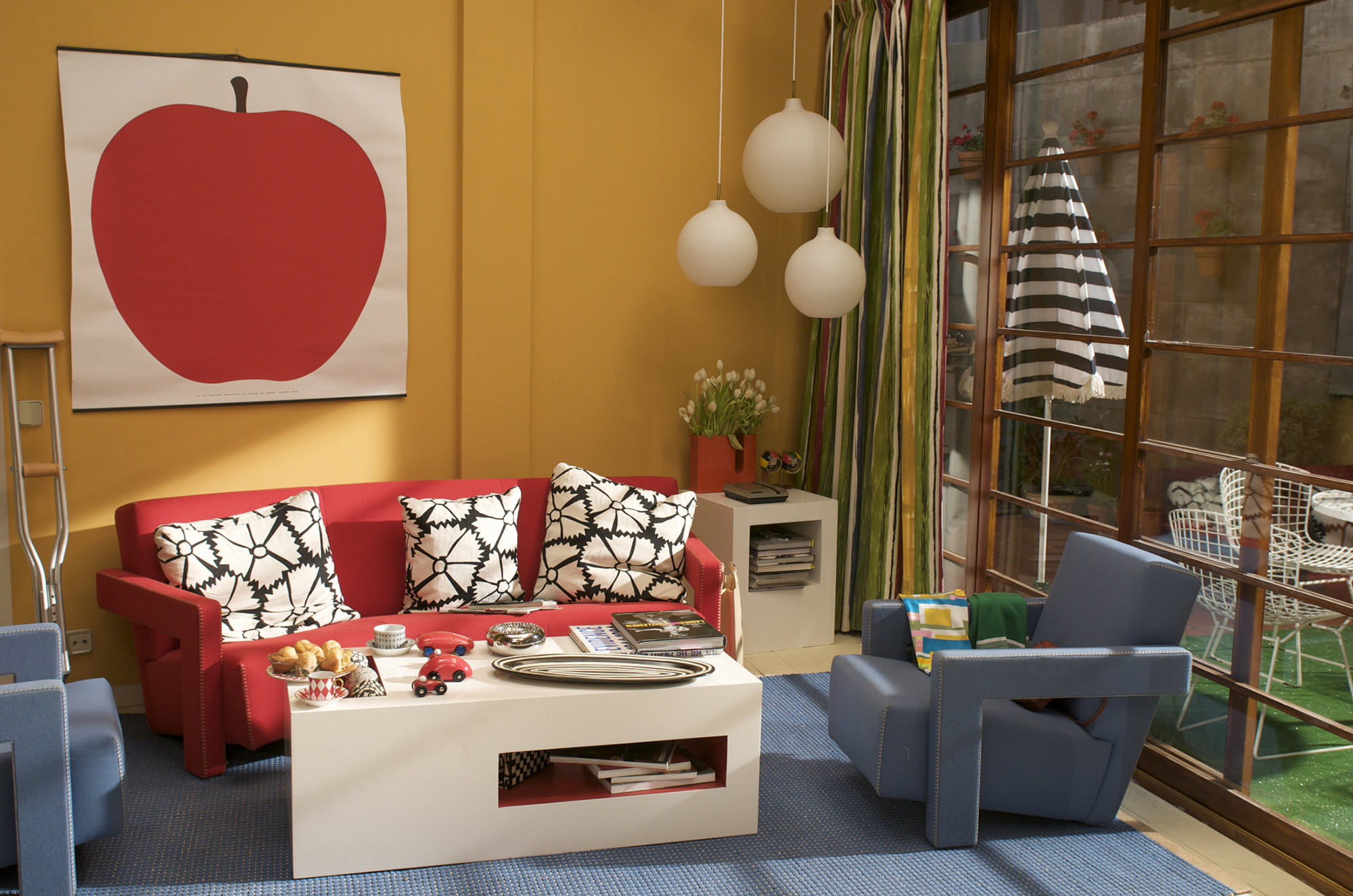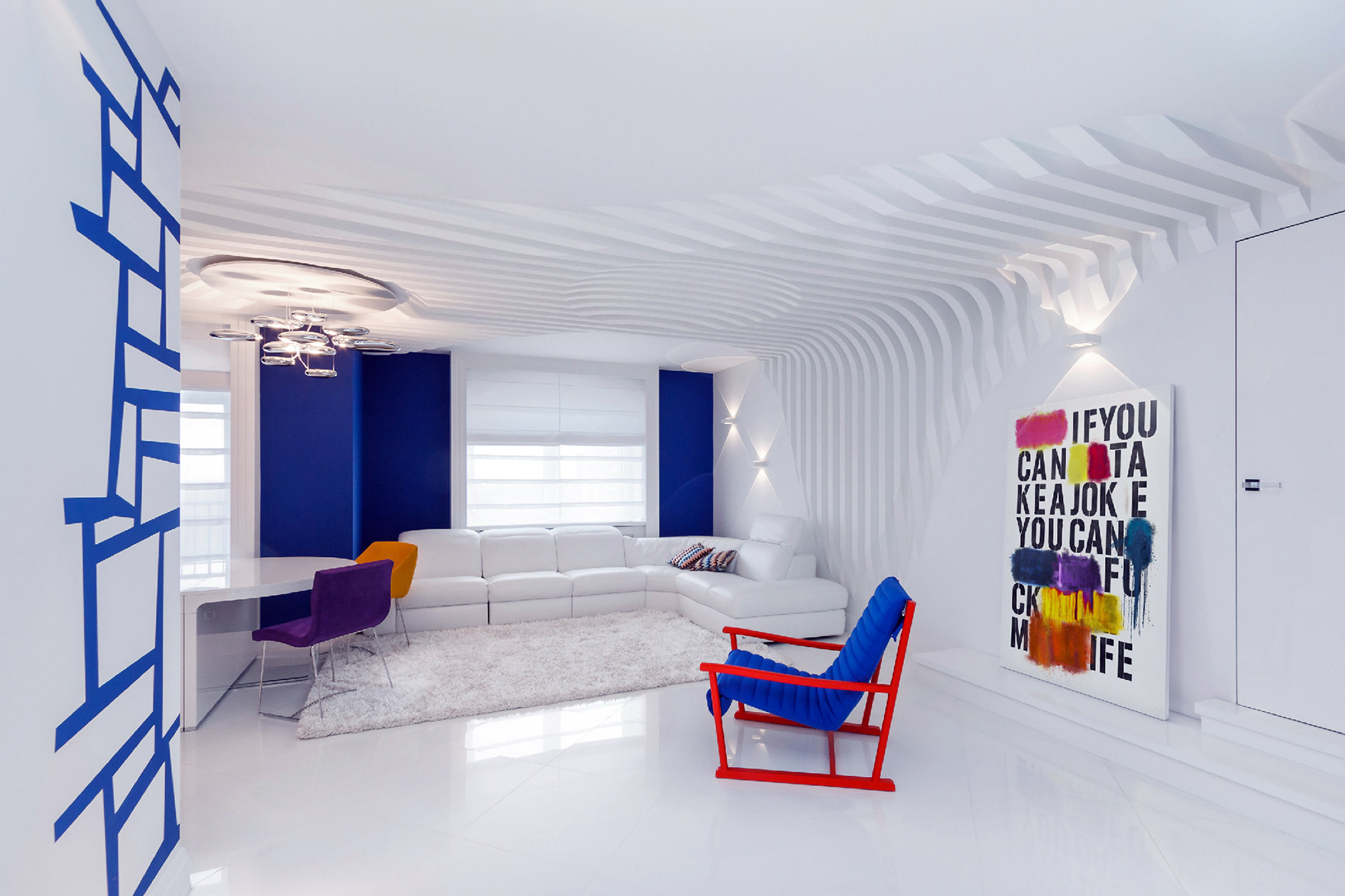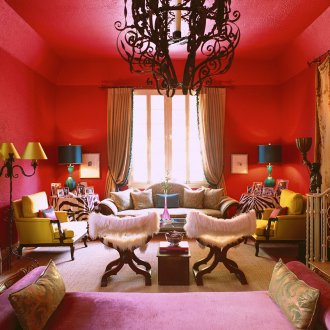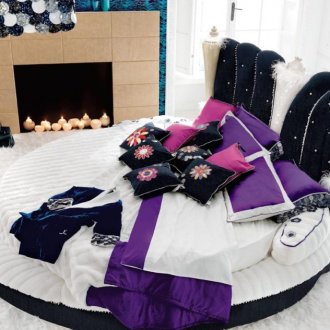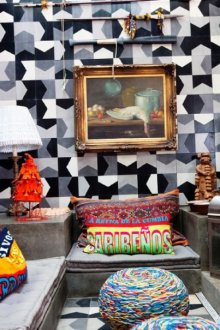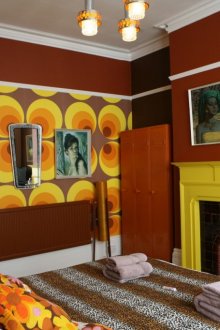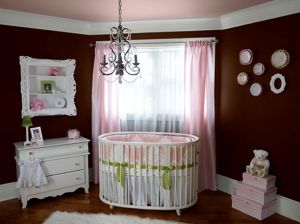Kitsch style in the interior (22 photos): create an avant-garde design
The concept of Kitsch (from German Kitschen - to do something, to hack) appeared at the end of the nineteenth century in Germany. It began to designate mass-produced art objects with low cost and the same low artistic qualities. Simply put, consumer goods. Most often, these were figurines, postcards, paintings "for comfort", souvenirs. Deprived of the creativity and authenticity inherent in true art, kitsch immediately became an example of bad taste, primitivism and vulgarity.
A little later, Kitsch began to designate a separate style in art. It happened in the "era of change." Any cardinal changes in the life of society (socio-political, economic) will inevitably affect all of its areas - the spiritual, including. Art is no exception. Revolutionary nihilists appear, denying generally accepted norms and ideals, and changing their views on generally accepted classical standards. As a result of this, as a form of protest to society, new trends in art arise. Thus, the Avant-garde style arose, completely denying the traditional classical canons, distinguished by the brightness of the color palette and the unusual shape. And with it the Kitsch style, which is essentially the same Vanguard style, only brought to the point of absurdity.
Kitsch Style Varieties
Interior design in the style of Kitsch is divided into "spontaneous" (unconscious) and "intentional". It can be conditionally divided into three areas:
Kitsch lumpens
Dictated by Kitsch Lumpen poverty. This is a variety of furniture, outdated interior items, cheap trinkets. Kitsch lumpen is an indicator of the low standard of living and non-standard thinking of the author.
A teenager’s room can also be the center of Kitsch lumpen. The rebellious spirit and youthful maximalism here can manifest itself in the form of graffiti, saturated acid colors in the interior. And also in the presence of unusual diverse gizmos, many of which are very unexpected - for example, road signs or lampposts.
Pseudo-Luxurious Kitsch
Kitsch's pseudo-luxurious style is an interior design in which there is a noticeable desire to emphasize imaginary well-being by any means. This is the interior in the design of which, instead of natural finishing materials, their imitation is used. This is a room where numerous luxury goods are presented, often of dubious quality. And this is the interior, which inept designers, wanting to set the "best show off", "stuff" everyone indiscriminately, while forgetting about the style.
The availability of funds, the use of the most fashionable natural elements of decoration, expensive furniture and rich decoration also do not guarantee that in the end Kitsch style will not be formed. If, for example, you put a country-style fireplace, expensive oriental vases and modern fluorescent lamps in one interior, you get an unconscious pseudo-luxurious Kitsch.
The kitchen and bedroom are the rooms in which the most unconscious Kitsch is formed. Interior design always requires a professional approach and a sense of proportion.
Designer Kitsch
Design Kitsch is intentional.Only he can be considered a real style of interior design. The style is controversial, but, nevertheless, rightfully occupying its own separate niche in the art of interior design. Kitsch style is found in the works of many famous designers. Only the most experienced of them can afford to resort to this style. After all, this is a kind of hooliganism, irony, a subtle mockery of the classical canons of design art, a provocation. The intentional style of kitsch is the ability to combine the incongruous. This is "art for art's sake." Kitchen, living room, youth cafe - the most popular places for experiments in the style of Kitsch.
Who chooses the kitsch style
Intentional (design) Kitsch - this phenomenon is quite rare. This is a challenge to established canons and rules, a parody of remnants of the past, emphasizing modern achievements. Only very brave, creative, mostly young, people - rebels in spirit can afford to use the Kitsch style in the interior. And these are people who seek to declare themselves, to draw attention to themselves. The creative elite (Bohemia) can be assigned to this category. Design Kitsch - “crazy” youth, courage and sophisticated taste.
Kitsch Style Features
Like any other style in the art of interior design, Kitsch style has its own individual characteristics:
Mixing in one interior a wide variety of styles
A kitchen is the most common example of such spontaneous kitsch. This room quite often represents a “vinaigrette”, for example, from the classical style, futurism and country style.
Disharmony of colors and shapes
The Vanguard style, as mentioned earlier, gave birth to the Kitsch style, and therefore the used color palette and forms for these two styles, it would seem, are identical. But there is a significant difference. The interior, made in the style of the avant-garde, there is a harmony of color and form. For example, bright color accents (such as furniture) in the interior always contrast with a light background. And in Kitsch style, there is a complete absence of any color rules and borders! All colors of the spectrum, including acid ones, are used in interior design in the style of Kitsch beyond measure. And strict geometrical forms coexist here with formlessness. A true riot of colors and shapes that discord with each other!
Combination of incompatible materials
Materials in the style of kitsch are used contradictory. Their joint use in any other style would be considered bad form, but not in the style of Kitsch. Czech glass and plastic, velvet and faux fur, “marble” columns and linoleum, chrome and gilding - everything can be used, and at the same time.
Using a variety of furniture
In the style of Kitsch, any furniture can be combined at the same time - modern, rare, of different shapes, different styles, from different sets. A kitsch-style bedroom could be the location of an old cheap iron bed and an exquisite dressing table. And the kitchen in the same style is the place for antique buffets, Soviet-era stools and modern built-in appliances. Why not? This is kitsch style! The main thing here is shocking!
A large number of trinkets and decor elements in the interior
Kitsch style welcomes the presence in the interior of a huge number of decorative details - statuettes and busts, reproductions of paintings and posters, postcards and dolls, candlesticks and watches, openwork napkins and lambrequins, designer souvenirs and consumer goods. It is desirable that all these pleasant trinkets be many and preferably immediately in one place.
So dictates the style of Kitsch - the style of contradictions and creative chaos.
